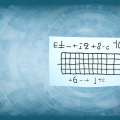The product rule of logarithms is an important mathematical concept that allows for the simplification of equations containing products of logarithms. By understanding and applying the rule, complex equations can quickly and easily be solved. In this article, we will explain the product rule of logarithms, discuss its applications, and provide examples to help you better understand and apply the concept.
What is the Product Rule of Logarithms?
The product rule of logarithms states that if two numbers are multiplied together, the logarithm of the product is equal to the sum of the logarithms of the individual numbers. This can be written in mathematical notation as: loga(xy) = loga(x) + loga(y). This rule is sometimes referred to as the addition law of logarithms.
The product rule of logarithms is useful for simplifying equations that involve products of multiple numbers. By using the product rule, the equation can be rewritten in terms of the logarithms of the individual numbers, which can then be solved more easily. This rule can also be used to solve equations that involve exponents, as the exponent can be expressed as a logarithm.
Explaining the Product Rule of Logarithms
The product rule of logarithms can be understood by considering an example. Suppose you have two numbers, x and y, which have been multiplied together. The logarithm of the product, or loga(xy), can be evaluated by using the rule: loga(xy) = loga(x) + loga(y). In other words, if we take the logarithm of both sides, we can treat the multiplication as addition.
For example, let’s consider the numbers 4 and 5, with the base 10 logarithm. To calculate log10(xy), we use the rule to find log10(4×5) = log10(4) + log10(5), which gives us a result of 0.60 + 0.70 = 1.30.
The product rule of logarithms is a useful tool for simplifying calculations. It can be used to quickly evaluate the logarithm of a product without having to calculate the individual logarithms of each factor. This can save time and effort when dealing with complex equations.
Applications of the Product Rule of Logarithms
The product rule of logarithms is used in a number of different applications, from solving equations to finding unknown values in complex equations. It is a useful tool for simplifying long equations and solving problems involving exponentials and polynomials. The rule is used in calculus as a way to find derivatives and integrals, by taking advantage of its properties for converting multiplication to addition.
The product rule of logarithms can also be used to solve equations involving logarithmic functions. By using the rule, it is possible to solve equations that would otherwise be difficult or impossible to solve. Additionally, the product rule can be used to simplify equations that involve multiple logarithmic terms, making them easier to work with. Finally, the product rule can be used to solve equations involving exponential functions, as it allows for the conversion of multiplication to addition.
Solving Problems Using the Product Rule of Logarithms
The product rule of logarithms can be used to solve a variety of problems involving equations containing products of logarithms. For example, suppose we have an equation that can be written as log10(xyz) = 4. To solve this equation, we can use the product rule to break it into three separate equations: log10(x) + log10(y) + log10(z) = 4. We can then use the properties of logarithms to solve for each value of x, y, and z.
Recognizing Patterns in the Product Rule of Logarithms
As with other rules in mathematics, it is helpful to recognize patterns in the product rule of logarithms. For example, if you have a product of three or more numbers, you can use the product rule to break it into multiple equations that can be solved separately. You can also work backwards from a given equation to find the individual terms that were multiplied together to produce the numerical result. This can be useful for problem solving and understanding more complex equations.
Examples of the Product Rule of Logarithms
The product rule of logarithms can be applied in a variety of different ways; some examples are provided below:
- log10(abcd) = log10(a) + log10(b) + log10(c) + log10(d)
- log10(x³yz⁴) = 3log10(x) + log10(y) + 4log10(z)
- log10(xyz) = log10(x) + log10(y) + log10(z)
Limitations and Challenges with the Product Rule of Logarithms
The product rule of logarithms is a useful concept that can make solving equations much simpler. However, it does have some limitations and challenges. For example, if a equation involves products of very large numbers, then it may be impossible or difficult to solve due to the enormous number of terms generated. Additionally, care must be taken when using an approximation for the values involved in order to ensure an accurate solution.
Conclusion
In conclusion, the product rule of logarithms is a powerful mathematical tool which can be used to efficiently simplify equations involving products of logarithmic terms. It is a useful concept for solving problems in calculus involving exponentials and polynomials, as well as understanding and solving more complex equations. Although there are some limitations and challenges associated with it, with practice and understanding these can be overcome with ease.





